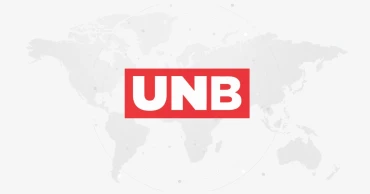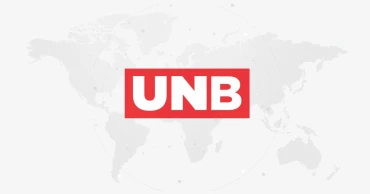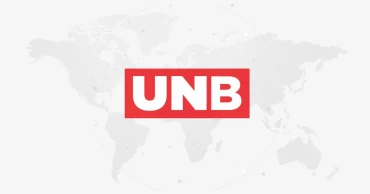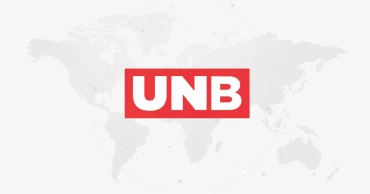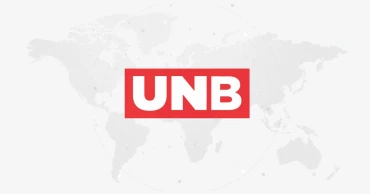currency
Bangladesh and China agree to increase use of local currency in bilateral trade
Bangladesh and China have agreed to enhance cooperation in financial regulation, and encouraged increased use of local currency settlement in bilateral trade, according to a joint statement issued after Prime Minister Sheikh Hasina’s three-day official visit to Beijing.
Hasina returned home early hours of Thursday after talks with Chinese President Xi Jinping and Prime Minister Li Qiang.
The Bangladesh side welcomes Chinese banks to establish branches in Bangladesh, and vice versa.
Bangladesh and China agreed to strengthen coordination in international and multilateral affairs, and expressed readiness to further coordinate positions and build broader consensus in multilateral processes concerning international peace and security, sustainable development, human rights, humanitarian affairs, climate change, energy transition and environmental protection, to jointly safeguard the common interest of developing countries.
The two sides discussed various aspects of the Global Development Initiative put forward by President Xi Jinping.
The Chinese side is ready to share experience on GDI issues with the Bangladesh side.
How Chinese media covered the PM’s Beijing visit
The Chinese side also presented the Global Security Initiative (GSI) and the Global Civilization Initiative (GCI) to the Bangladesh side to ensure peace, development and shared prosperity for all.
PM Hasina paid an official visit to China from July 8 to 10 at the invitation of Premier Li.
During the visit, Hasina had a meeting with Xi and met with Wang Huning, chairman of the National Committee of the Chinese People’s Political Consultative Conference.
In a cordial and friendly atmosphere, the two sides had in-depth exchange of views on bilateral relations and international and regional issues of mutual interest, and reached extensive consensus.
The Bangladesh side congratulated the Chinese side on the 75th anniversary of the founding of the People’s Republic of China, and applauded China’s historic achievements and transformation in economic and social development in the new era.
Bangladesh lauded China’s efforts to build itself into a great modern socialist country in all respects and advance the great rejuvenation of the Chinese nation on all fronts through the Chinese path to modernisation, and expressed sincere wish for China to realise the Chinese dream of national rejuvenation as scheduled.
The Chinese side applauded the achievements of Bangladesh in economic and social development, and expressed continued support for Bangladesh’s graduation from the UN Least Developed Countries (LDC) status in 2026 as scheduled and Bangladesh’s steady progress toward realising its Vision 2041 of a “Smart Bangladesh.”
The two sides applauded their strategic partnership of cooperation established in 2016, and agreed that the China-Bangladesh relationship has reached a new height.
Xi-Hasina meeting: China to cooperate with Bangladesh in grants and loans
Leaders of the two countries agreed to stay committed to the Five Principles of Peaceful Coexistence, carry forward the long-standing friendship, foster greater synergy between development strategies of the two countries, advance the Belt and Road cooperation, and elevate the bilateral relationship to a comprehensive strategic cooperative partnership.
The two sides decided to take the opportunity of celebrating the 50th anniversary of the establishment of China-Bangladesh diplomatic relations in 2025 to plan together for the future development of bilateral ties and take the China-Bangladesh relationship to another new height.
The two sides agreed that China and Bangladesh have been good neighbours and good friends since ancient times, sharing a millennium-old history of friendly exchanges.
Over the past 49 years since the establishment of diplomatic relations, the traditional China-Bangladesh friendship forged by generations of leaders of both countries has grown from strength to strength.
The two countries have always respected each other, treated each other as equals, and pursued mutual benefits. With ever deepening mutual trust, the two countries have achieved fruitful outcomes in their practical cooperation, and kept close collaboration in international and regional affairs, thus setting a fine example of friendship and mutually beneficial cooperation in relations between countries.
The two sides reaffirmed their commitment to mutual respect for each other’s sovereignty, independence and territorial integrity, and to mutual understanding and support on issues involving each other’s core interests and major concerns.
The Chinese side firmly supports Bangladesh in maintaining peace and stability, realising development goals as envisioned under Vision 2041, non-interference in its internal affairs, and independently choosing a development path suited to its national conditions.
The two sides stressed that the authority of the U.N. General Assembly Resolution 2758 is beyond question and brooks no challenge.
Bangladesh reiterated its firm commitment to the one-China principle and its position that the government of the People’s Republic of China represents the whole of China, and Taiwan is part of China, and Bangladesh supports China on issues pertaining to China's core interests and China's efforts to safeguard its national sovereignty and territorial integrity.
Read more: China to continue zero-tariff treatment to Bangladesh for transitional period beyond 2026
1 year ago
Top 10 Strongest Currencies in the World as of May 2024
From ancient barter systems to today's sophisticated economies, currency remains the universally accepted medium of exchange. Over centuries, currency has evolved into fiat money, raising questions about how national currencies are valued and which are the strongest globally. Let's explore the ten most valuable currencies as of May 2024.
What is Currency Strength?
The strength of a currency is determined by the purchasing power of the said currency relative to other currencies.
The strength of a currency is calculated through a benchmark (typically USD). For example, if the value of BDT decreases relative to USD, it means that the purchasing power of BDT will fall resulting in depreciation. On the contrary, an increase suggests greater purchasing power and currency appreciation.
Read more: Bangladesh's foreign exchange reserves fall below 20 bln USD
How are Currencies Valued?
The value of a currency is determined in the forex market. The price of one currency in terms of another is called the exchange rate. Exchange rates are determined by supply and demand forces in the market.
But beyond the concept of supply and demand, other factors like economic growth and stability, central bank policies, global trade flows, and market speculation play a huge role in determining the value of a currency.
Historically, the USD enjoyed a strong valuation due to a positive combination of the above factors. Today the USD is the primary reserve currency of the world as many central banks and international institutions hold significant reserves of US dollars for international trade and investment purposes. The Triennial Central Bank Survey conducted by the Bank for International Settlements (BIS) found that the USD was one side of 88% of all forex transactions between 2019 to 2022.
Read more: Explainer: What it means to let taka float
Top 10 Most Valuable Currencies in the World As Of May 2024
Kuwaiti Dinar (KWD)
The Kuwaiti Dinar is the strongest currency in the world with 1 KWD buying 3.26 USD. The KWD is a relatively new currency introduced in the 1960s.
The currency was initially pegged with the British Pound but later re-pegged to an undisclosed basket predominantly focusing on the USD. Like most Middle Eastern countries, the KWD draws its strength from global oil exports.
Bahraini Dinar (BHD)
Bahraini Dinar comes in second with 1 BHD buying 2.66 USD. The BHD was founded in 1965 and has since been pegged to the USD.
Bahrain, being a small island nation in the Persian Gulf draws much of its currency strength from the large oil and gas exports. Additionally, the country has diversified its economic interests to include financial services, tourism, manufacturing, and logistics. The sound monetary policy, strong reserve, and a stable political environment also play into BHD’s strength.
Read more: Bangladesh Bank introduces Crawling Peg System; dollar rate set at Tk 117 with immediate effect
Omani Rial (OMR)
The Omani Rial is the third strongest currency in the world. 1 Omani Rial can be bought for 2.60 USD. The OMR was founded in 1970 and has since been pegged with the USD.
The geographic position of Oman as a Gulf nation has endowed it with massive oil and gas reserves. In addition to the oil and gas exports, the Omani Central Bank has been prudent in formulating fiscal policies. The political stability and FDI inflow combined with a short supply of OMR have been key determinants for its strong position.
Jordanian Dinar (JOD)
Moving away from oil-rich economies, the Jordanian Dinar holds the fourth place among the strongest currencies in the world. 1 Jordanian Dinar is equivalent to 1.41 USD.
Jordan has historically been a politically stable country even though it is positioned in a geographically tense territory. The currency, since its foundation in the 1950s, has been pegged to the USD. The country undertook reform measures to liberalize trade, streamline regulations, and enhance the business environment. Besides, a strong foreign aid and remittance environment also aided JODs strength.
Read more: BB introduces US dollar and currency (Taka) swap for commercial banks
British Pound (GBP)
With over 600 years of history, the British Pound is one of the oldest and strongest currencies in the world. 1 GBP currently buys 1.26 USD. The British Pound is not pegged to any other currency.
Throughout much of the 19th and middle of the 20th century, the GBP was the primary reserve currency of the world. To this day, the GBP takes a minor position right after the USD. Historically, the UK had a strong GDP growth rate with the Bank of England strongly regulating the monetary policies. The high trade balance and foreign investment inflow have worked in favor of the GBP’s position.
1 year ago
Top 10 Strongest Currencies in the World in 2023
Currencies are the backbone of the global economy, providing a means of exchange and facilitating international trade. Some currencies, however, are considered stronger and more valuable than others, which makes them particularly attractive to investors and traders. These are the top ten most valuable currencies in the world in 2023, based on their exchange rates against the US dollar.
How is foreign currency priced?
Foreign currency is priced based on its exchange rate, which represents the value of one currency in terms of another currency. Exchange rates are determined by the supply and demand of each currency in the foreign exchange market. The value of a currency can fluctuate based on a variety of factors, including economic conditions, political events, and changes in interest rates.
In general, when a currency is in high demand, its value will increase relative to other currencies, and when it is in low demand, its value will decrease. For example, if there is a high demand for U.S. dollars, its exchange rate will likely rise compared to other currencies, and vice versa.
Exchange rates can be quoted in two different ways: as a direct or an indirect quote. In a direct quotation, the foreign currency is the base currency; while in an indirect quote, the domestic currency is the base currency. For example, in Bangladesh, the exchange rate between the U.S. dollar and BDT is 107.52. This means that 1 U.S. dollar can be exchanged for BDT 107.52 (direct quote) or BDT 1 can be exchanged for 0.0093 U.S. dollars (indirect quote).
Foreign currency can be purchased and sold in the foreign exchange market through banks, brokers, or online platforms. The exchange rate at the time of the transaction will determine the cost or value of the currency being exchanged.
Read More: How to Identify Fake Currency Notes in Bangladesh
Which are the Top 10 Strongest Currencies in 2023?
Whether you are a seasoned investor or simply curious about the global financial landscape, the world's 10 strongest currencies will provide you with valuable insight.
Kuwaiti Dinar
The Kuwaiti Dinar (KWD) is considered the strongest currency in the world with a value of 1 KWD equaling 3.26 USD and 347.65 BDT. The KWD is unpegged, allowing it to move freely, and is supported by Kuwait's sizable sovereign wealth fund managed by the Kuwait Investment Authority.
The economy of Kuwait is heavily dependent on oil and gas exports, making it vulnerable to fluctuations in global crude oil prices. However, the KIA has drawn up a plan to counter this and ensure the value of the KWD remains strong and stable.
Read More: How to safely send remittance to Bangladesh?
2 years ago
How to Identify Fake Currency Notes in Bangladesh
Fake money is often termed a silent epidemic. The consequences of fake notes on the economy aren’t visible overnight. Rather it has a long-term financial impact that effectively cripples the economy. In fact, the situation became so severe for India that they had to undertake a demonetization policy to curb the supply of counterfeit notes. While the issue with counterfeit currency isn’t as severe in Bangladesh, it is still prevalent. Here are some tips to detect a fake currency note in Bangladesh.
The State of Fake Currency Notes in Bangladesh
The history of fake notes in Bangladesh almost dates back to the introduction of the currency itself. Bangladesh Taka was officially introduced as the state currency in 1972 after the independence. A year later, coins of different denominations of the fraction of 1 taka were also introduced.
Currently, the government holds 1 Taka, 2 Taka, and 5 Taka as treasury notes. There have been several changes and the introduction of new notes post-2000. Bangladesh Bank introduced the 1000 Taka note in 2008 with the most recent addition being the 200 Taka note.
Over the years, the security concern over counterfeit currencies has seen BB add several security features to the currencies.
Read More: Govt keen to expand digital banking, examine if digital currency could be launched
A look at the pattern of all the busted counterfeit currency gangs in Bangladesh reveals that most of the fake notes are either in 500 to 1000 Taka denomination. It’s a simple case of the economy of scale where the cost of counterfeiting can only be accrued by the 500 and 1000 Taka denominations.
The early counterfeits, before the computer and modern printers, were produced through the hand press system. Needless to say, they were far less accurate and easily detectable. But with more advanced software and printers, fake currencies are becoming more and more like the real ones. A recent bust of a Dhaka-based fake currency gang showed how the security strip, micro prints, and watermark are accurately replicated making it almost impossible for a normal person to distinguish between the two.
Even then, there are some strict guidelines set by Bangladesh Bank to identify fake notes. You can check for all of these if you’re worried about the authenticity.
Read More: HSBC introduces domestic foreign currency transaction through RTGS
Ways to Detect Fake Currency Notes in Bangladesh
Watermark
The first obvious sign is the watermark. Each BB-issued 500 and 1000 Taka note has the BB emblem, the denomination value, and a portrait of the father of the nation Bangabandhu Sheikh Mujibur Rahman as the watermark.
Oftentimes, a cheap replicated fake note will have a misplaced watermark or the print of the portrait will be off when held against the sunlight. This is a clear way to detect fake notes.
Security Strip
The second most obvious way to detect a fake note is by looking at the security strip. The security strip is lodged within the note and has distinct features which are near impossible to replicate.
The first thing to look for is placement. The security strip is positioned vertically on the left side of the note. If you carefully check the top of the security strip, you will notice that it intersects the BB emblem printed on the note. Fake notes often fail to be this precise.
Read More: Haji Danesh to be Bangladesh's first cashless campus: Palak
The new 500 and 1000 Taka notes have the denomination and the BB emblem printer vertically on them. The older notes from 10 Taka to 500 Taka had the word “Bangladesh” printed in Bangla. The 1000 Taka note had the denomination printed on a mirrored progression along the strip.
Print Quality
The print quality is another indicator to identify fake notes. That is because the printing process of a banknote is very different from traditional home-based printing. A banknote uses high-quality ink and press printing methods to produce notes.
These are rig-like printing machines that are extremely expensive as well as difficult to get hands-on. A typical fake note made with a standard ink printer or even an industrial-grade press printer will not be able to replicate the microprint or the uneven feel at certain places. And that brings us to the next point.
Microprints
Every Bangladesh bank note issued by BB has distinct microprint which not only makes them unique but also highly difficult to counterfeit. These micro prints are more prevalent on the 500 and 1000 Taka notes.
Read More: Towards a cashless society: MFS monthly transactions cross Tk 1.11 lakh crore
These notes have small seven diagonal ink prints which have a distinct hand feel to them. additionally, there are several details on the BB emblem as well as the portrait of the father of the nation which is near impossible to replicate with a normal printer.
Serial Number
Bangladesh Bank-issued notes have a unique seven-digit code preceded by two letter grades. The grading system and reading system are not disclosed to the public. Bank teller machines and money counter machines are equipped with the reading mechanism of bank-issued notes.
BB can easily check the authenticity of any note by comparing its serial number with the database.
Raised Ink
Another telltale sign of a fake note is the raised ink. Bank notes, especially the 100, 500, and 1000 Taka notes have raised ink at several points which are easily understood by touch. You can get a feel of the raised ink in the note description, bottom, and sides of the notes.
Read More: Bangladesh Bank to flirt with digital currency en route to cashless society
Bangladesh Bank also uses color-shifting ink on the 100, 500, and 1000 Taka notes. If you move the note around under direct light, you will notice the color shifting to a bottle-green tone. This color shifting can’t typically be recreated on fake notes.
The feel of the Note
The currency note paper is not your typical day-to-day use paper. These papers are specifically imported from different foreign sources under exclusive tenders of the Security Printing Press of Bangladesh.
As a result, any person handling a fake note will be easily able to tell the difference between the two. A fake note will be either too smooth or too rough, never exactly the same. The government also has a general import embargo on the exact same type of paper used for printing currency notes.
Final Words
If you look closely, it's easily possible to detect a fake currency note in Bangladesh. Whether it’s the watermark, or hand feel on the security strip, one or the other will definitely be off. With the high denomination of Bangladeshi currencies limited to 500 and 1000 Taka notes, it's relatively easy to spot fake notes. Still, you should be careful while handling and if you notice any anomaly, inform the central bank to report the case.
Read More: Digital Currency: Benefits and Risks of the Cashless Economy in Bangladesh
2 years ago
Cash-strapped Pakistan's rupee plunges amid talks with IMF
Cash-strapped Pakistan’s currency plunged Thursday against the dollar after the government indicated it was ready to comply with tough conditions set by the International Monetary Fund for the next tranche of its bailout package.
Pakistan is seeking a crucial installment of $1.1 billion from the fund — part of its $6 billion bailout package — to avoid default. Talks with the IMF on reviving the bailout stalled in the past months.
The rupee closed at 230 to the dollar on Wednesday. It slipped further, trading at 255 for $1 within hours of the market reopening Thursday. The government did not immediately comment on the developments.
Analyst Ahsan Rasool says the rupee’s decline is a sign that Pakistan was close to securing the much-needed loan from the IMF.
The rupee's slide comes days after Prime Minister Shahbaz Sharif said his government was ready to adhere to the “tough conditions of the IMF" to revive the $6 billion bailout package, which has been on hold for the past several months.
Read more: Pakistan orders malls to close early amid economic crisis
Pakistan is currently grappling with one of the country’s worst economic crisis amid dwindling foreign exchange reserves. That has raised fears that Pakistan could default, although Sharif insists it pulled the country from the brink of the default when it took over last year.
Sharif has blamed Prime Minister Imran Khan and his government for the economic malaise. Khan was ousted in a no-confidence in Parliament in April, and has since been campaigning for early elections.
2 years ago
HSBC introduces domestic foreign currency transaction through RTGS
The Hongkong and Shanghai Banking Corporation (HSBC), along with Bangladesh Bank (BB), has initiated foreign currency (FCY) transaction solution through real-time gross settlement (RTGS) clearing of the central bank.
This solution will enable HSBC’s valued customers to make domestic foreign currency payments to other participating bank’s FCY accounts and to receive FCY payments from other participating bank’s FCY accounts, according to a media release issued today.
Additionally, under the trade umbrella, HSBC can now receive domestic export payments and execute domestic import payments besides receiving fund transfer via FCY RTGS from other bank margin accounts/ERQ account for import liability settlements.
Read BB lets dealers to open foreign currency deposit accounts
Earlier, domestic foreign currency settlement was executed through FCY demand draft (FDD), drawn on Bangladesh Bank, which required multiple days.
This previous process was time-consuming as the transaction details had to be checked and validated manually.
HSBC has been continuously introducing smooth and convenient digital services through its online platform, HSBCnet.
Through the establishment of domestic foreign currency settlement through RTGS, clients will be able to make their cash management payments online which remove their need to physically visit bank premises and handle paper-based instruments like FDD. As the FCY RTGS process is automated, the transaction will be faster, safer and more secured.
Read Cellfin launches Mastercard dual currency prepaid card
Payments will now be processed easily without any hassle and fund realisation for payee will be faster.
This will result in shorter processing time as transactions will be completed near real-time using RTGS instead of multiple days using FCY DD.
HSBC said it is determined to create opportunities for its clients to avail of smooth and convenient services.
Thus, with the introduction of new customised products like foreign currency transaction solutions via RTGS, HSBC is continuously making its customer journey easier.
Read Bangladesh Bank to flirt with digital currency en route to cashless society
3 years ago
Forex market may be more volatile unless reforms are done
Recent fall in inward remittances, earnings from exports, and a looming global recession are all signalling that the external account crisis will be prolonged further, they say.
They projected that around $20 to $25 billion worth of foreign currency has been consumed in different forms by informal transactions, which are not recorded at any official level. Because of this, the depth of the foreign exchange crisis is remaining less understood and unaddressed. they say.
Dr Debapriya Bhattacharya, a macro-economist and a Distinguished Fellow at the Centre for Policy Dialogue (CPD), told UNB that to understand the magnitude of the problem it is important to see how it works or does not work in a complex market of foreign currency.
“We should take note of it that a big volume of the foreign currency, I mean, US dollar is used for financing consumption of goods and services overseas as well as third-party cross-border payment for smuggled items such as gold and cattle,” he said.
“Moreover, illicit financial flow is also taking place from over-invoicing in the private sector transactions and public sector projects,” he said.
In line with these unrecorded and informal, and often illicit foreign exchange transactions, the monetary policy in general and foreign exchange regulation, in particular, have limited institutional effectiveness with regard to external balance management, he pointed out.
Debapriya said Bangladesh is now a $500 billion economy, and managing such an emerging macro-economy with a fast-changing global scenario demands institutional reforms to swiftly oversee the forex market.
As the government negotiates balance of payment support from the International Monetary Fund (MF) such reforms addressing the informal transactions of foreign currency will become a major concern to deal with, he said.
Read: Market-based foreign exchange rate may be introduced soon: Finance Minister
This will also need complementary trade and investment policy reforms, he added.
Though the economy is expanding, the institutional reforms and capacity is not being enhanced accordingly, he said.
He said that the World Bank has rightly predicted that unless massive reforms are done Bangladesh’s economic growth would slip in the face of impact of global trade competition.
Dr Mohammad Abdur Razzaque, an economist and specialist in applied international trade, told UNB that falling remittances by 25 percent and export falling by over 6 percent is “a warning for Bangladesh’s forex market.”
He said Bangladesh will get an advantage slightly from the falling prices of fuel, edible oil and other commodities in the global market due to a recession.
The use of forex for import payments will be decreased at the same time, affecting Bangladesh’s export income, and the trade deficit will also widen then, he said.
In the first two months (July-August) of the current fiscal year 2022-23, the trade deficit stood at $4.55billion. As the export income is less than the import spending, this large trade deficit appeared at the beginning of the fiscal year.
At the same time, the deficit in the current account balance of foreign transactions also exceeded by $1.5 billion.
Also read: Foreign exchange rate stable after Bangladesh Bank tightens spending
According to Bangladesh Bank, in the first two months (July-August) of the current fiscal year, goods worth $12.69 billion have been imported against exports worth $8.13 billion. This has created a trade deficit of $4.55 billion.
The deficit volume will widen more as the export in last month (September) fell by 6 percent.
Bangladesh Bank is selling US dollars from the reserves in continuation of the last fiscal year to bring 'stability' to the forex market. The central bank sold $2.57 billion from reserves in two months (July-August) and of the current FY 2022-23.
The central bank sold $7.67 billion from reserves in the FY 2021-22 to stabilize the forex market. Bangladesh had never sold so many dollars from the reserve in a single fiscal year earlier. However, in the previous financial year (2020-21), Bangladesh Bank bought a record $8 billion to keep the forex market stable during the falling trend of imports during the Covid-19 pandemic.
3 years ago


